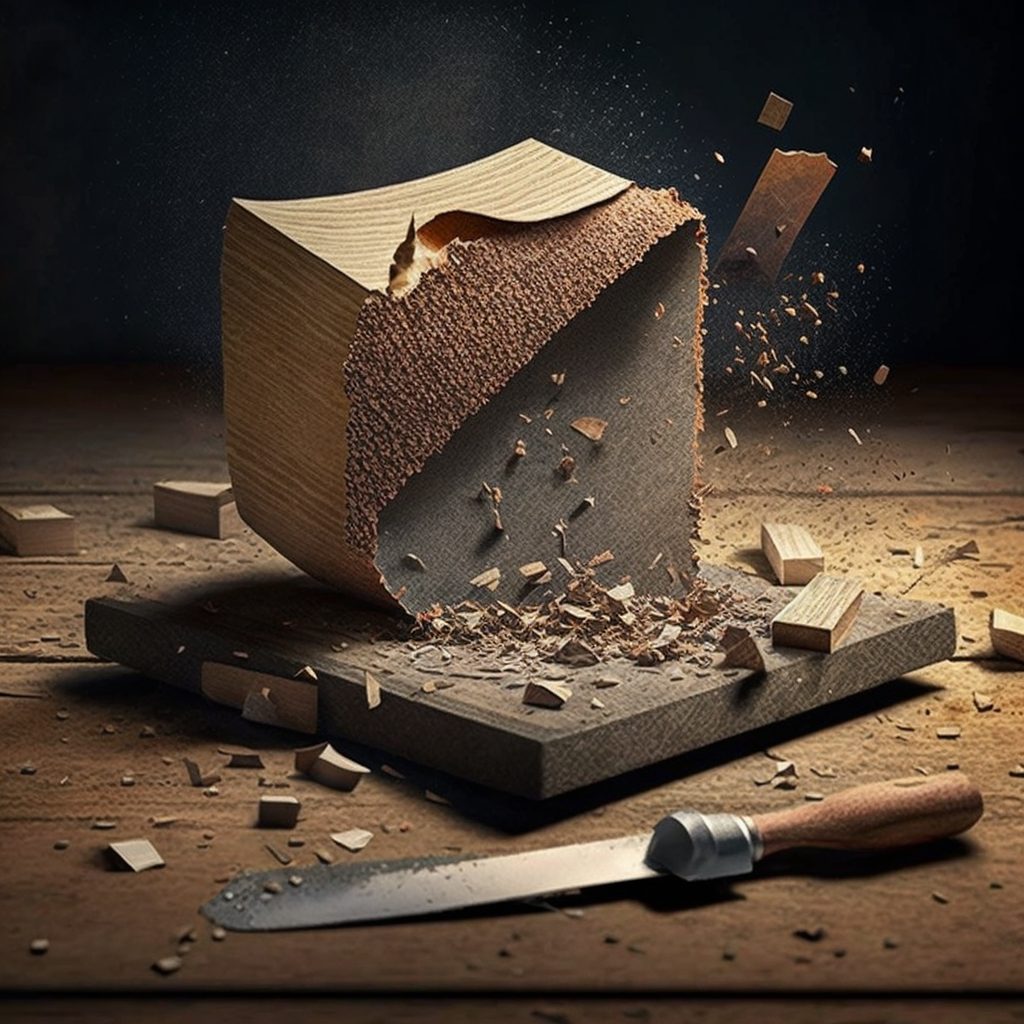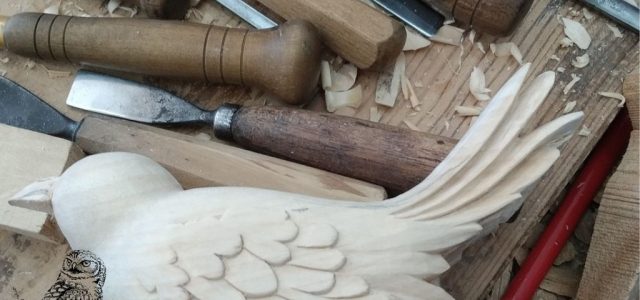![How to Fix Cracked Wood [ #1 Step-by-Step Guide]](https://bestwoodcarvingtool.com/wp-content/uploads/2023/02/blue_penguin_wood_cracks_grass_sun_ab252a52-6938-488d-9cb9-12d7abae27b2-970x350.jpg)
![How to Fix Cracked Wood [ #1 Step-by-Step Guide]](https://bestwoodcarvingtool.com/wp-content/uploads/2023/02/blue_penguin_wood_cracks_grass_sun_ab252a52-6938-488d-9cb9-12d7abae27b2-750x350.jpg)
![How to Fix Cracked Wood [ #1 Step-by-Step Guide]](https://bestwoodcarvingtool.com/wp-content/uploads/2023/02/blue_penguin_wood_cracks_grass_sun_ab252a52-6938-488d-9cb9-12d7abae27b2-640x300.jpg)
Cracks in wood are a common problem that many homeowners and do-it-yourselfers face.
Whether you have an antique furniture piece or a solid wood floor that has been impacted by humidity changes, addressing the cracks is critical to preventing additional damage.
These cracks can compromise the structural integrity of the wood as well as its visual appeal. In this article, we will look at the various causes of wood cracks and the different techniques for repairing them, including both temporary and permanent solutions. With just a few simple tools and materials, you can easily restore any damaged wooden surface in no time!

Temporary solutions
If you’re looking for a quick fix for small cracks in your wood, using a cracking wax or wood crack sealer can be an easy solution. These products are specially formulated to fill in cracks and prevent them from spreading. They can be applied with a brush or a cloth and can provide a temporary solution for small or hairline cracks.
For larger or deeper cracks, a more durable solution is required. Wood filler for cracks is a thicker material that can be used to fill in the gaps. It is recommended to use a wood filler that matches the color of the wood to ensure a seamless finish.
Applying wood filler takes a little more time and effort, but it can provide a permanent solution for larger or deeper cracks. With the right products and techniques, fixing cracks in wood can be a straightforward process that can restore the appearance and structural integrity of your wood pieces.
Permanent solutions
If you’re looking for a permanent solution to repair cracks in wood, there are a few options to consider. One of these is the glue and clamping method, which involves applying the best wood glue to the crack and then clamping the wood together until the glue dries. This method is an excellent choice for small or hairline cracks and can be used to repair furniture and other wooden items. The glued crack will become incredibly sturdy, and the repaired piece will look as good as new.
Another permanent solution is splitting the wood, which involves removing the cracked section of wood and replacing it with a new piece of wood. This is a more extensive repair that should only be attempted by experienced woodworkers. Splitting the wood requires precision and skill, but when done correctly, the repaired piece can be just as strong as the original. These permanent solutions will not only restore the appearance of your wooden items but also ensure their structural integrity, allowing you to enjoy them for years to come.
Now that you know which options you have when it comes to different methods and techniques for fixing cracked wood, we can move on to our detailed step-by-step guide!

Step-by-step guide
As we already mentioned, there are various techniques for fixing wood cracks. Today we will focus on the two simplest methods.
Using Wood Putty or Filler Sticks to Fix Cracks in Wood
- Purchase a filler compound that’s the same color as the wood. This will ensure that your repair work looks natural and seamless once it’s dry.
- Push the filler into the hole with your finger and make sure there are no air bubbles. Try to fill up the crack completely, even if it means overfilling it a bit.
- Smooth out the filled area using a putty knife so that it is level with the surface of the wood. This will also help remove any excess filler material and create an even finish when you sand down later on.
- Let the wood filler dry for 8 hours or more to ensure that it is completely set before attempting to sand it down.
- Sand down the excess filler using fine-grit sandpaper until the surface is smooth and even with the rest of the wood. Try to find the best sandpapers in the market to achieve the best possible results!
- Finish off by wiping away any dust created during sanding and applying a coat of sealer or varnish, if desired. This will help protect your repaired wood from moisture, dirt, and other elements.
Also, one of the most interesting methods to use is filling cracked wood with epoxy. But, be aware, this method is only for experienced ones! Here you will find a list of necessary materials for this technique.
- Sandpaper
- Epoxy resin
- Hardener
- Mixing cups
- Stirring sticks
- Putty knife
- Paintbrush
- Plastic wrap
Step 1: Prepare the surface
Use sandpaper to gently sand the surface around the crack. This will help to remove any rough edges and create a clean surface for the epoxy to adhere to.
Step 2: Mix the epoxy
Follow the instructions on the epoxy resin and hardener package to mix the two components together in a mixing cup. Stir the mixture thoroughly until it is well combined.
Step 3: Apply the epoxy
Using a putty knife, apply a small amount of the mixed epoxy to the crack. Be sure to fill the entire crack and ensure the epoxy reaches the bottom of the crack. Smooth the epoxy with the putty knife and allow it to cure for a few hours.
Step 4: Sand the surface
Once the epoxy has cured, use sandpaper to sand down any excess epoxy that may have hardened on the surface. Be sure to sand until the surface is smooth and even.
Step 5: Repeat the process
If necessary, repeat the process by applying another layer of epoxy and allowing it to cure. Sand down the surface until it is smooth and even.
Step 6: Apply a finishing coat
To protect the surface and provide a finished look, apply a coat of epoxy over the entire surface using a paintbrush. Be sure to cover the entire surface evenly and smoothly. Cover the surface with plastic wrap and allow it to cure overnight.
By following these steps, you can easily fix a crack in wood using epoxy. Not only will the repair restore the appearance of the wooden item, but it will also ensure its structural integrity.

Prevention
There are certain things you can perform if you want to work on prevention when it comes to wood cracks. The quality of wood is determined by its grain, density, and moisture content. All three of these factors contribute to the strength and durability of wood. The first step in ensuring long-term durability for your wooden furniture or structures is to make sure that the wood has been properly kiln-dried before use.
Another approach is to seal any existing cracks in the wood with a sealant such as polyurethane, varnish, or oil. This will not only help to prevent further cracking but also protect the wood from damage caused by moisture or UV light. It’s also important to maintain a stable humidity level in your home, as wood is more likely to crack in dry or humid conditions. This can be achieved with the use of a humidifier or dehumidifier, depending on the climate in your area.
Additionally, if you notice a crack in your wood, it’s important to stop it from spreading as soon as possible by applying a sealant or wax to the affected area. Finally, if you do have cracks in your wood, you can fill them in using wood filler, wood glue, or a mixture of sawdust and glue. By taking these preventive measures and addressing any cracks as soon as they appear, you can keep your wooden items in great condition for years to come. Also, don’t forget to buy stains for wood, if you want to get the best possible look.
Final Words
Fixing cracked wood can be a daunting task, but with the right tools and techniques, it is possible to restore the wood to its original condition. Whether you choose a temporary or permanent solution, it’s important to address cracks in wood as soon as they appear to prevent them from getting worse. Remember to maintain a stable humidity level and use sealants or wax to prevent further cracking.




No comments so far.
Be first to leave comment below.